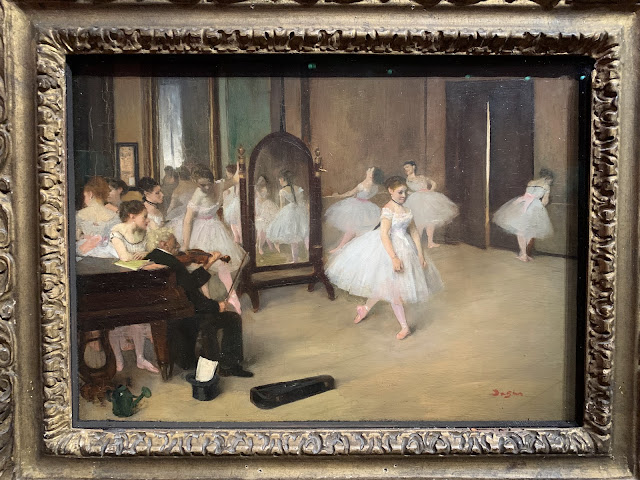The First Impressionists
Esther and Abhijit invited me to join them at a recent exhibit at Musee d'Orsay recalling the first public showing of impressionist art. In 1874, a group of artists (many so-called Impressionists included, although a number of others, too) rejected the authority of the established Paris Salon in gate-keeping what art was acceptable for public display and recognition. They went rogue and staged their own, competing show at the same time. The idea behind the Musee d'Orsay exhibit was an interesting one: gather as many pieces from both the rogue show and the Paris Salon of 1874 as possible and exhibit them close to the original conditions under which they were shown, basically transporting the exhibit-goer back to 1874. The exhibit provided historical context as well: Paris was recovering from its disastrous siege by German troops, France's defeat in the Franco-Prussian War, and the violent quashing of the Paris Commune. Their were deep rifts in Paris society but also a yearning for rebuilding and healing.
The rogue exhibit was a rejection of the old guard but, at the same time, did not present a unified vision of the future of art in Paris. In fact, it was not curated, and the only requirement for inclusion was willingness of the artist to pay a fee. Monet, Renoir, Cezanne, Pissarro, and Degas were willing to pay the fee, but many others were as well, including some whose work has not, ahem, stood the test of time. It was fascinating (and sort of fun) to see some pretty sub-par stuff being displayed alongside Monet and Degas at a major art museum in Paris.
After the first few rooms with works from the rogue exhibit, we continued onto rooms of pieces that had been displayed at the concurrent Paris Salon of 1874, hung so close together on dark red walls that the frames nearly touched, just as they had been at the Salon. The contrast along so many dimensions was striking: style of painting, palette used, subjects portrayed, mode of display, formality, size, and on and on. The lower bound of quality in the Salon was certainly much higher, maybe even the average quality, but the display was so hide-bound, so stuffy, so stodgy, in comparison to the rogue exhibit. I wondered whether it might have been more effective to have visitors see the Salon rooms first, followed by the Impressionists and others. (I believe we did see some additional pieces by les Impressionists following the Salon rooms, but I missed why that ordering was used, as most of them came first.)
Here are some pieces that stood out to me. The first two are two of my favorites from the rogue exhibit, followed by two ridiculous pieces, also from the rogue exhibit.
We concluded a very busy evening by grabbing a quick dinner at a Chinese noodle restaurant and catching the film Bolero, a biopic about Maurice Ravel, at a cinema near Champs Elysees.









Comments
Post a Comment